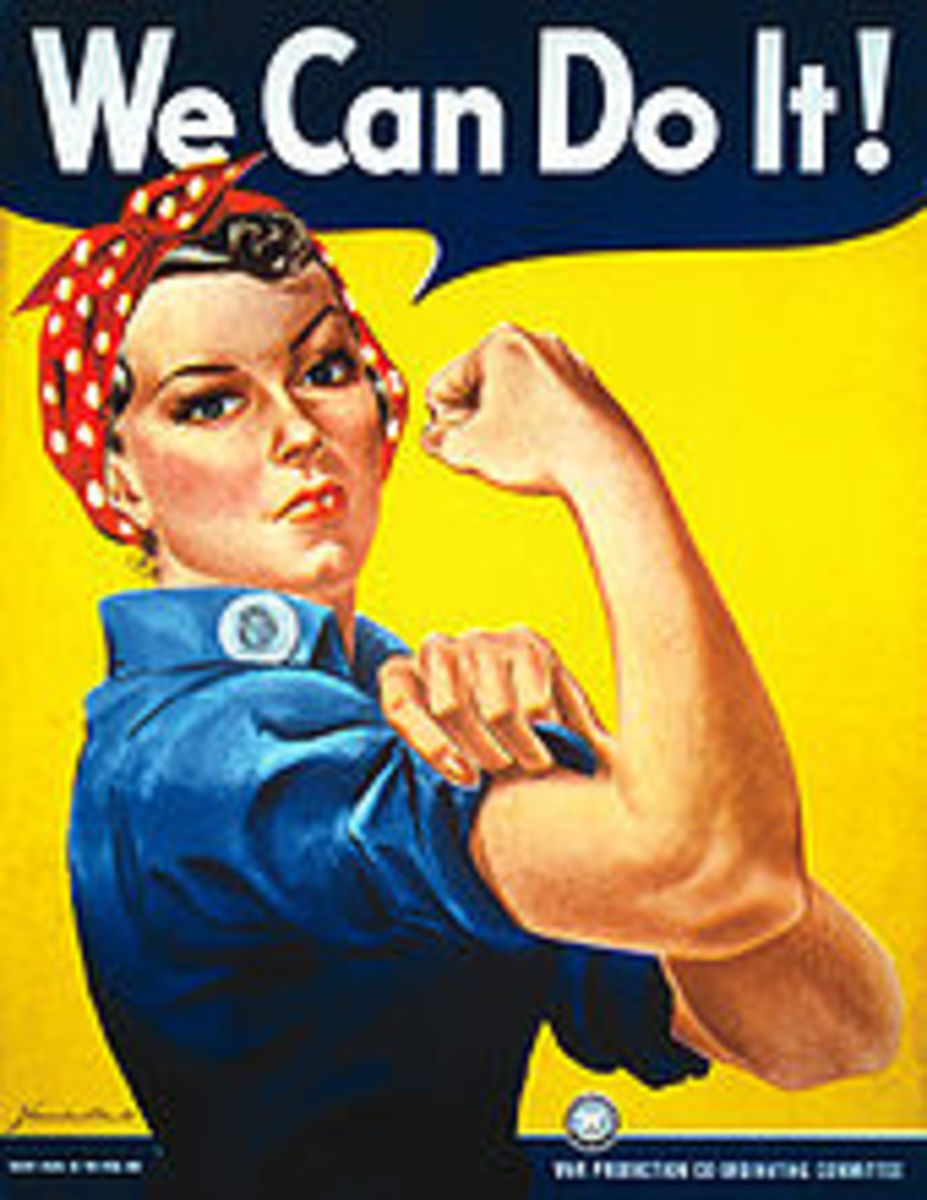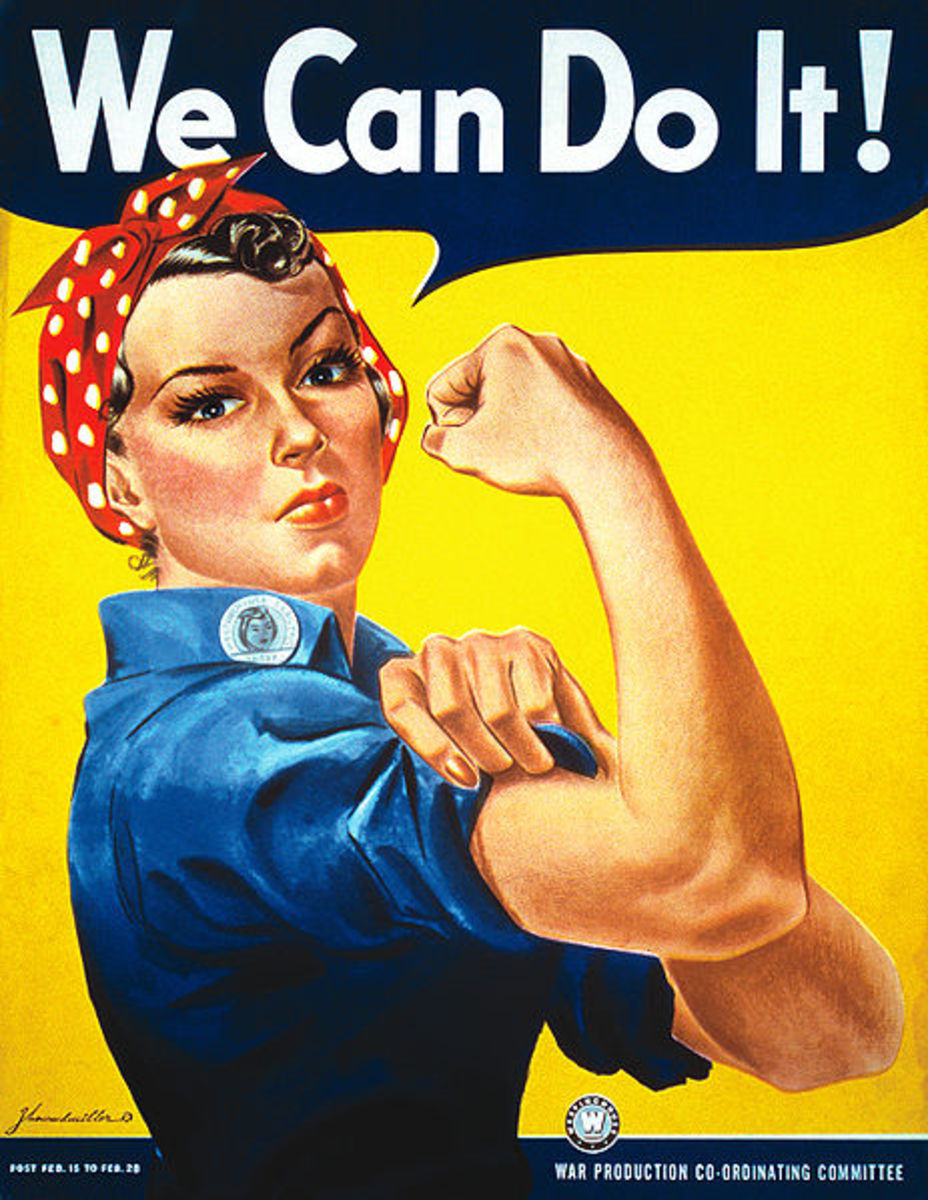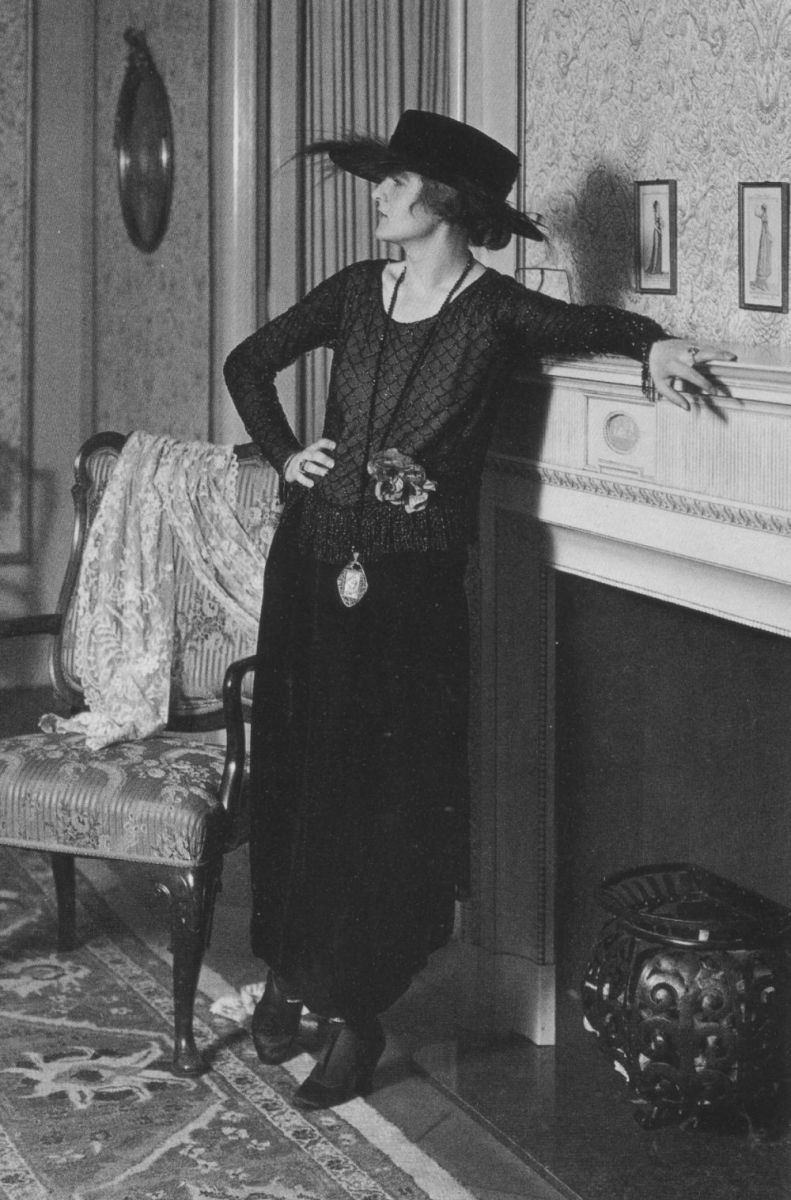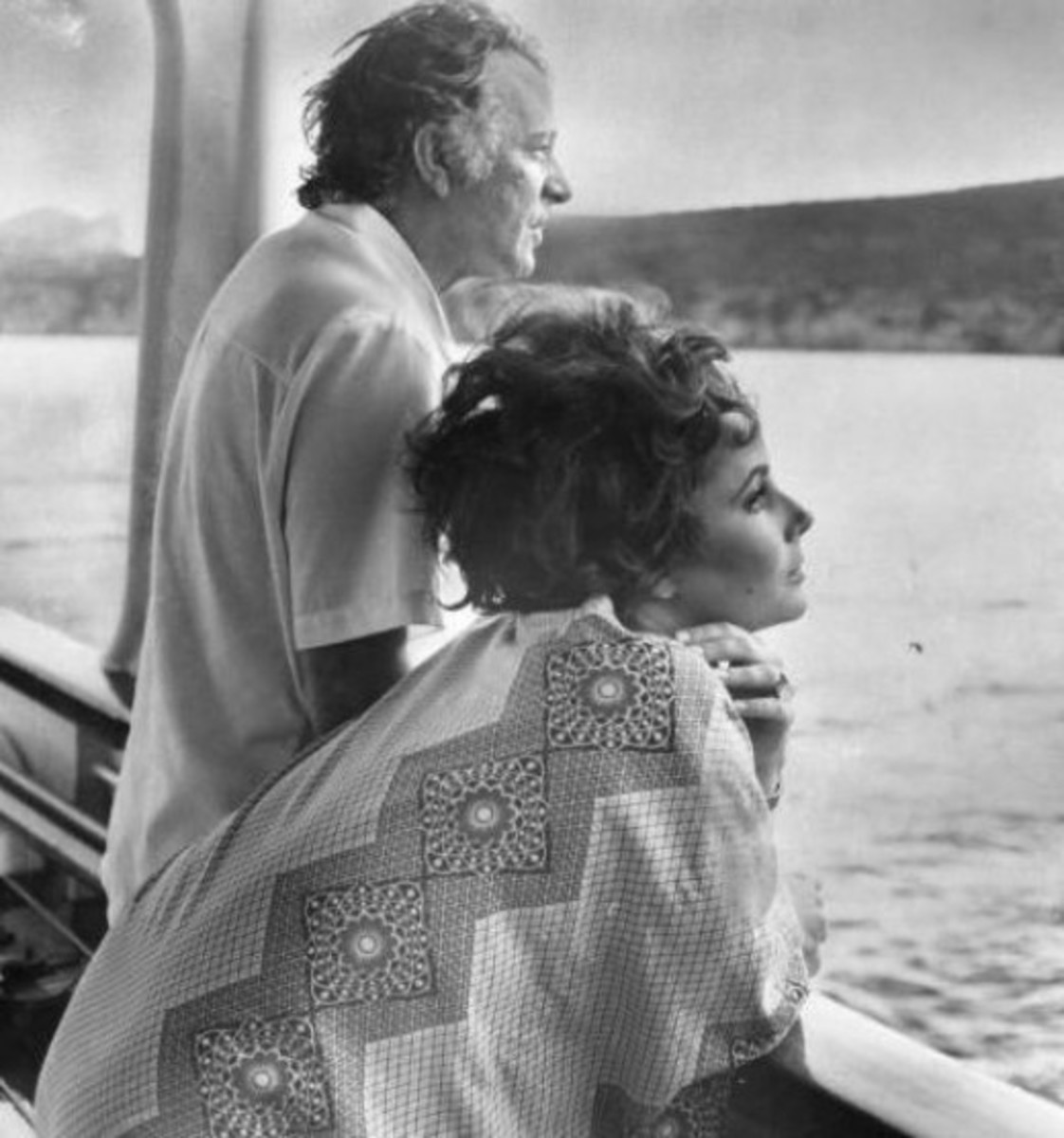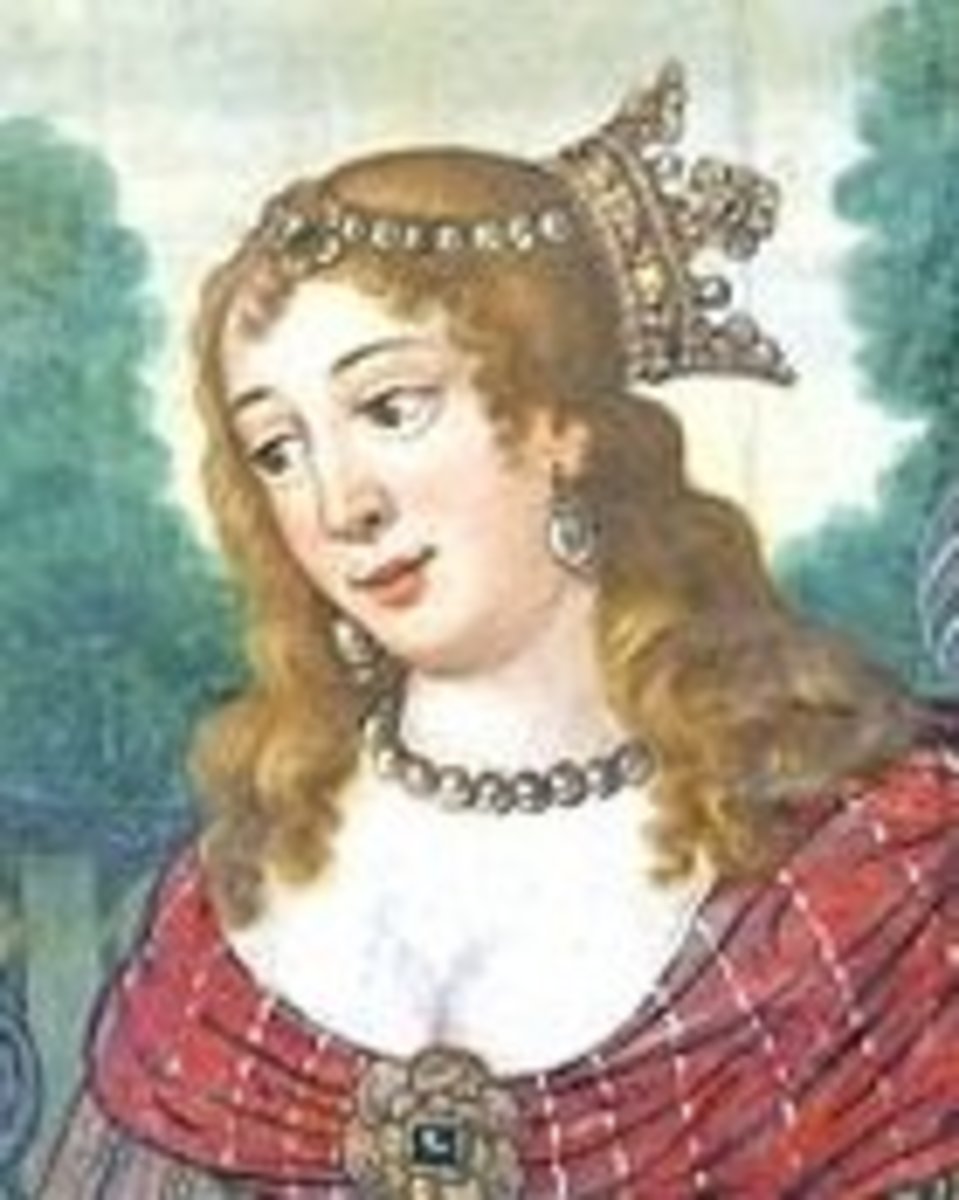Rosie The Riveter a World War 2 Recruiter or a Morale Boosting Icon?
Rosie The Riveter
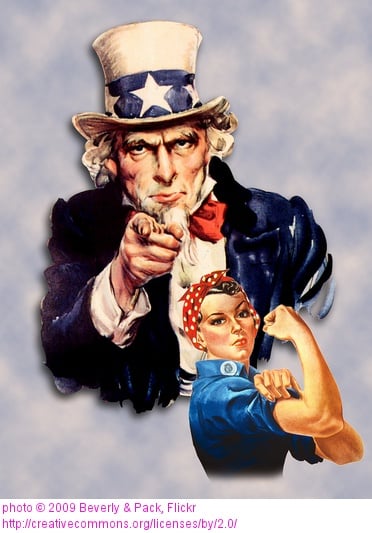
Various Vintage posters and photos to recruit women into WW2
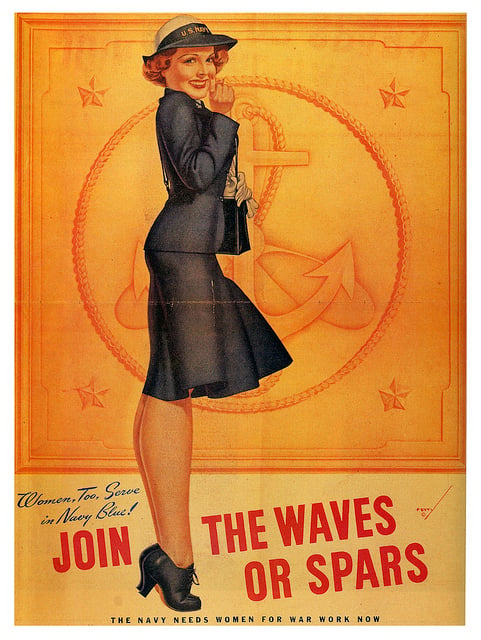
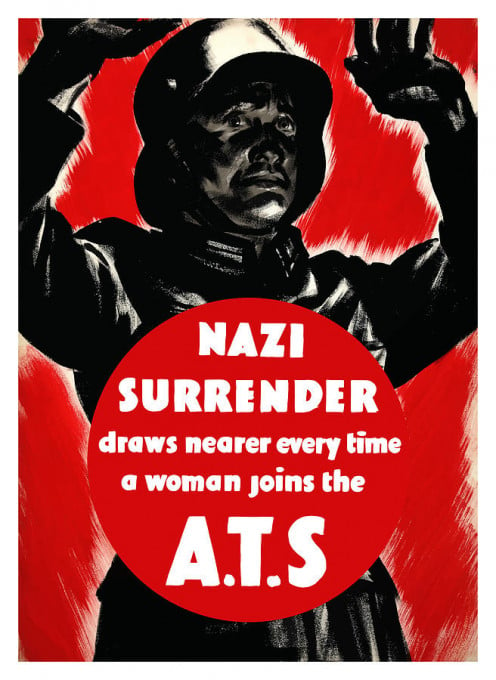
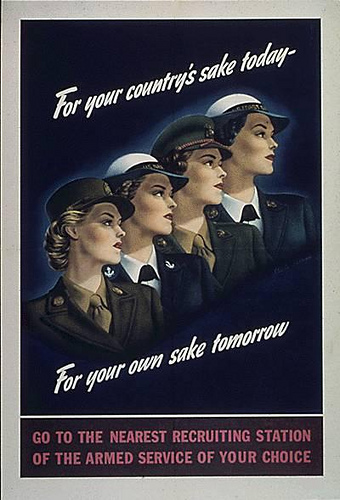
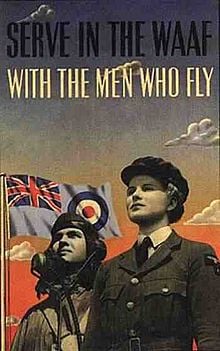
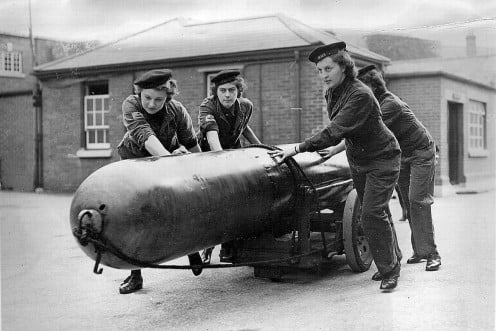
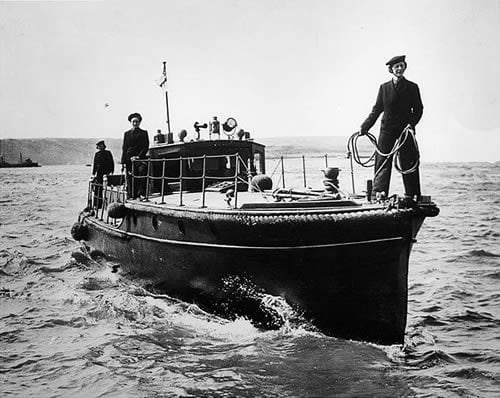
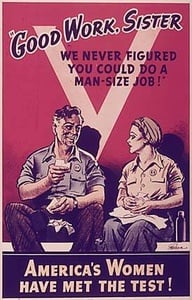
The Many Faces Of Rosie
People have often said that the Women images used to create various posters during World War 2 were not printed with the intention of Recruiting more Women into the War, but instead were designed to boost the Women's Morale. Here is a peek at some of those posters. Take a look and decide for yourself.
A Brief Brush Up:
December 7, 1941 Japan bombs Pearl Harbor.
December 8, 1941 The United States declares war on Japan (the very next day) entering World War 2.
December 12, 1941 Nazi Germany declares war on the United States.
While American men were being drafted into military services for World War 2, they left severe holes, gaps and empty spots in many workplaces in communities all over the United States.
It was during this time that the women decided to support their men who were fighting in what was to later become known as the most gruesome war in history. Women began supporting the war efforts by stepping up to the plate to begin training and working men's jobs in metal and welding factories making various war supplies. While in training, women were often told things such as, "If you can use an electric mixer, you can certainly use a drill."
Women also were able to Volunteer to join the men on the bloody fronts of war by providing Nursing and other types of Emergency Medical Assistance to the men who were injured during active duty.
Real Life Rosie ~ Geraldine Huff Doyle
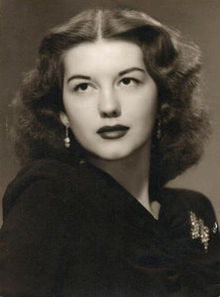
Geraldine Inspired Rosie The Riveter
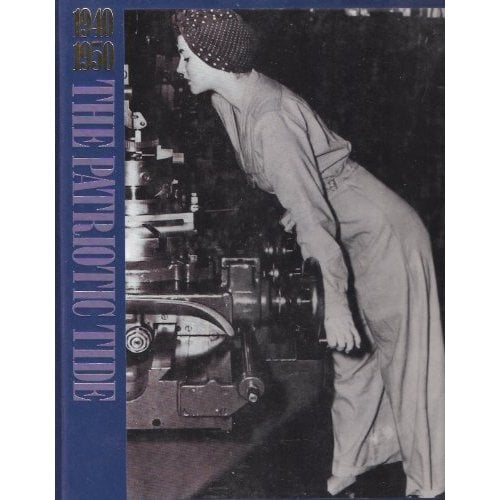
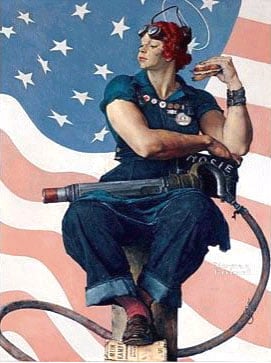
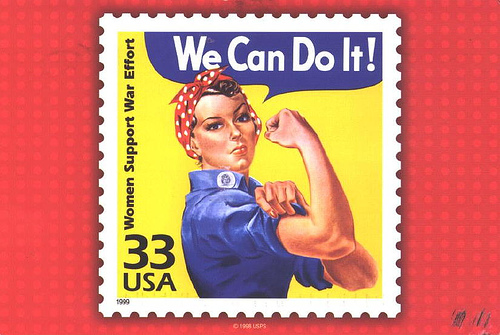
Geraldine Huff Doyle
- Born July 31, 1924
- Died December 26, 2010
- Believed to be the original model for the 'Rosie The RIveter' WE CAN DO IT poster.
Photos:
- Geraldine Huff Doyle on the cover of The 1986 Patriotic Tide Book by Time Life 1940s - 1950s.
- A painting of Rosie The RIveter painted by Norman Rockwell in 1943, which was later auctioned for $4,959,500.00 on May 22, 2002.
- Postage Stamps of Rosie The Riveter.
Norman Rockwell's Painting
Norman Rockwell's Painting of Rosie the Riveter was painted in 1943 and was auctioned by Sotheby's on May 22, 2002 for $4,959,500.
The painting is 52 by 40 inches Oil On Canvas and is signed by Norman Rockwell.
Rosie The RIveter Postage Stamp
There are many different versions of the Rosie Postage Stamp available today at the Post Office.
Some of the stamps are pink and are decorated with pink ribbon for supporting the fight against Breast Cancer.
Marilyn "Rosie" Monroe
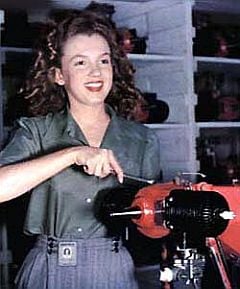

Norma Jean Dougherty
Norma Jean Dougherty was also known as one of the many faces of ROsie The RIveter before she became Marilyn Monroe the Hollywood Movie Star.
In the photo seen here taken in 1945, Norma Jean was 19 years old and working at the Radioplane Munitions Factory in Burbank, California.
Norma Jean was married to James Dougherty at this time, who was sent overseas in 1944 after joining the U.S. Merchant Marines. After James was shipped away, Norma Jean began to work at the Radioplane Factory where she was discovered by a professional Army Photographer who was shooting pictures of good looking women who were doing their part to support the war effort.
One of the stories was called Women Of Industry published in December 1944.
Abbreviations of Various Women's Branches of U.S. Military
WACS
| Women's Army Corps
| More than 150,000 American women served in the Women's Army Corps during World War 2
|
WAACS
| Women's Army Auxiliary Corps
| Secretary of War Henry L. Stimson authorized WAAC enrollment at 150,000 women.
|
WAAFS
| Women's Auxiliary Air Force
| WAAF was Established in 1939
|
WAFS
| Women's Auxiliary Ferrying Squadron
| Created in September 1942. Delivering light aircraft, fighters, bombers and transports from the factories.
|
WASPS
| Women's Airforce Service Pilots
| Organized in September 1942 to train and employ women to fly military aircraft for United States Army Air Forces during World War 2.
|
WRENS
| Women's Royal Navy Service
| In 1944 had 75,000 people. Originally formed in 1917 during World War 1
|
WAVES
| Women Accepted for Volunteer Emergency Services
| In July 1942 the WAVES became a women only World War II division of the U.S. Navy.
|
ATS
| Auxiliary Territorial Service
| Began in September 1938. In February of 1949 they merged into the Women's Royal Army Corps.
|
WRAC
| Women's Royal Army Corps
| All women in the British Army belonged to WRAC (excluding medical, dental, veterinary officers, chaplains and nurses) from 1949 to 1992.
|
In conclusion, every single one of these women contributes to the face of Rosie The Riveter.
Rosie The Riveter Song
After Reading This Article
Do You Think The Intention Of The Rosie Posters Were Made To:
Pin Curls and Victory Rolls
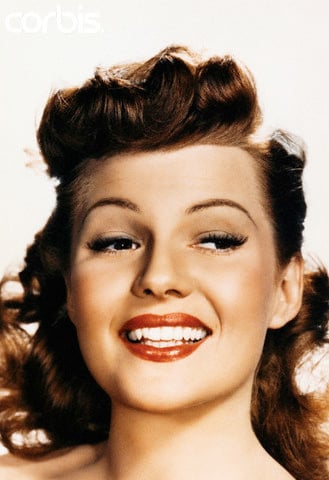
Why Do They Call Them Victory Rolls?
Victory Rolls were popular with the women of the 1940s for many years prior to and during World War 2. The name Victory Roll was given to this particular hair style by the women who participated in war efforts, worked in factory jobs and still managed to find the time to roll and style their hair.
Victory Roll was originally the name of a Fighter Plane Maneuver and was quickly adopted by women for their American Hairstyle which lacked a proper name.
Victory Rolls are directly related to the courageous women of America, whom were rightfully recognized as being a significant part of WW2 victory.
Victory Rolls have been attempting to return into style today, and I will be the first to say, "Although the look is stunning when it is styled right, but as you may be able to tell, not many women put enough effort or creativity into pulling off the various pin up looks of the 1940s-1950s.
The Birth Of the Iconic Victory Roll
There's nothing better than a good 'old fashioned' break down of solid understanding to become proficient in something.
vin·tage
(Noun)
1. The year or place in which wine, esp. wine of high quality, was produced.
Adjective
2. Of, relating to, or denoting wine of high quality: "vintage claret".
Synonyms
wine
In other words, Vintage lead me to Wine.
Which is useful in and of itself. We already know that an aged wine is a finer and more expensive wine. The wine answer I was given has great relevance to the term Vintage when it comes to style. New styles are never really new at all. To some of us, these styles may be refreshing for a change, but we are essentially bringing back the Vintage Styles that were popular during a previous time in history.
Now let's look up the term Retro.
ret·ro
(Adjective)
Imitative of a style, fashion, or design from the recent past: "retro 40s fashions".
(Noun)
Clothes or music whose style or design is imitative of those of the recent past.
The Vintage and the Retro styles that you see around you today are growing in numbers in every city and in every town everywhere. That might sound unappealing to some of you because we all know that following trends makes us just like the next trendy person. Fortunately for some of us, not too many of the people who attempt to represent the return of fashion trends from the 1940s and 1950s have a clue what they are doing or why they are doing it.
If their main goal is to bring back an old trend because they think it looks cute, it doesn't take long for a lack of passion and knowledge of the style to eventually show. In other words, they always fail to pull off the look that they are going for.
And so goes one of my favorite sayings, "Knowledge is Power & Ignorance is Bliss".
It is important, first of all to start with some background information about Vintage Pin Up and where Rock A Betty Styles come from as well as some education about why women styled their hair the way they did, since it seems to have many of us scrambling to bring it back to the present day.
You can easily spot a woman who wears the Vintage Pin Up look quite well. This is probably because she knows a thing or two about the history of the style.
Let us take for instance, the Victory Rolls in the hair.
You may have asked yourself, "How Do I Make Victory Rolls In My Hair?"
I feel that it is more important to first ask, "Why Are They Called Victory Rolls?
For those of you who do not know, first of all let me congratulate you on your desire for knowledge. That alone deserves respect. Knowing what you are representing and why you choose to represent it speaks volumes into your personal integrity.
The term Victory Roll dates back to the 1940s during World War 2.
The term Victory Roll was originally the name of a Fighter Plane Maneuver during the second World War. While American Fighter Planes flew through the air, they'd leave behind Rolls of smoke that would remain in the sky for hours after they had gone. This was when the term Victory Roll first came into play.
What does this have to do with Vintage or Retro Hair Styles?
The rolls worn in the hair of most women in the 1940s were extremely popular and fashionable, all the girls were doing it, they just hadn't come up with a name for the style quite yet.
Women were left behind at home alone or to conquer the full time job of single parenting their children after their husbands, fathers, uncles, brothers, and other men were drafted and shipped overseas to participate in the war. Because so many men were drafted, there left behind some substantially large holes and gaps in workplaces and factory jobs. There was nothing left to do but for women everywhere to step up to the plate and fill the roles that their men had left inside
and outside of the homes.
Women soon began working in factories (Rosie The Riveter was a woman icon for this time) and eventually began to volunteer for Emergency Services in the War efforts to take care of the men who sustained injuries during active duty. Women were required to wear their hair out of their faces, and they managed to find creative stylish ways to do so.
Mind you, women did not have all the fancy things in the 40's that we have to style our hair with nowadays. Mostly sticking to the use of Bobby Pins to make pin curls, Hair Rollers and even the use of Pipe Cleaners, they easily kept up with their Victory Rolls, succeeding in looking gorgeous.
The news of our Victory after the war had ended was wide spread National and International news. American Women had played a huge part in our Victory and were noted for it, for the first time ever.
One way that our women collectively decided to Celebrate their slice of the Victory Pie was by giving an official name to the stylish rolls that they proudly wore in their hair. Contributing their style to a celebration of the ending of the war. Women proved to stay looking gorgeous while filling male roles within their society as well as on the bloody fronts of war.


